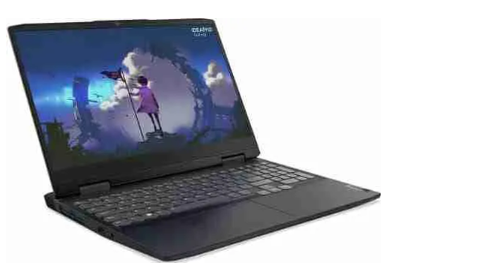Selecting the right laptop for each employee role can dramatically impact productivity and operational costs. Many businesses struggle with either purchasing underpowered machines that frustrate staff or overspending on premium specifications that remain unused. The key lies in understanding specific role requirements and matching them precisely to the required hardware capabilities.
When evaluating laptop prices in Kenya, businesses often make costly mistakes by applying a one-size-fits-all approach to their technology procurement. This strategy leads to waste of budget and employee dissatisfaction, as different roles have vastly different computing demands. Smart organisations recognise that a finance manager’s needs differ significantly from a graphic designer’s requirements, and they plan their purchases accordingly.
Understanding Role-Specific Computing Demands
Executive Requirements: Senior management staff typically focus on communication, presentations, and strategic analysis rather than resource-intensive tasks. Their laptops should prioritise portability, battery life, and professional appearance over raw processing power. A mid-range processor with 8GB RAM usually suffices for email management, document editing, and video conferencing needs.
Creative Professional Needs: Designers, video editors, and marketing teams require substantially more computing power to handle graphics software, large files, and rendering tasks. These roles benefit from dedicated graphics cards, 16GB or more RAM, and high-resolution displays. Skimping on specifications for creative roles directly impacts output quality and project timelines.
Operations Team Specifications: Staff handling data entry, customer service, and administrative tasks need reliable, consistent performance rather than cutting-edge features. Standard processors with adequate RAM ensure smooth multitasking without unnecessary expense. These machines should emphasise durability and cost-effectiveness over premium features.
Avoiding Common Specification Mistakes
Performance Overkill Trap: Many organisations purchase high-end gaming laptops or workstations for basic office tasks, wasting thousands on unused processing power. This approach stems from fear of underperforming rather than careful needs assessment. Most administrative roles function perfectly well with business-grade mid-range specifications.
Underspecification Consequences: Conversely, providing insufficient computing power creates frustration and reduces productivity. Employees forced to work with slow, inadequate machines often develop workarounds that compromise security and efficiency. The cost savings from cheaper hardware rarely justify the productivity losses and employee dissatisfaction.
Display and Input Overlooked: Screen quality and keyboard comfort significantly impact daily user experience, yet these factors often receive minimal consideration during procurement. Poor displays cause eye strain, while uncomfortable keyboards reduce typing efficiency and increase error rates.
Strategic Specification Matching
Memory Allocation Strategy: RAM requirements vary dramatically between roles, making this specification crucial for optimal performance. Basic office tasks function adequately with 8GB, whilst creative work demands 16GB or more. Consider future software updates and expanding workloads when determining memory needs.
Storage Solutions: Different roles generate varying amounts of data, requiring tailored storage approaches. Executives benefit from fast SSDs for quick boot times and responsiveness. Creative professionals need larger storage capacities for project files. Operations teams require reliable, cost-effective storage that balances speed with capacity.
Connectivity Considerations: Port availability and wireless capabilities often determine daily workflow efficiency. Remote workers need reliable WiFi capabilities and multiple connectivity options. Office-based roles may prioritise different connection types based on existing infrastructure and peripheral requirements.
Implementation Guidelines for Maximum Efficiency
Assessment Framework: Begin by documenting actual software usage and performance requirements for each role category. Monitor current system performance to identify bottlenecks and upgrade triggers. This data-driven approach prevents both over and under-specification whilst ensuring budget efficiency.
Future-Proofing Balance: Consider expected software evolution and role changes over the typical laptop lifecycle of three to four years. Build in modest specification buffers without excessive overengineering. Technology advances rapidly, making extreme future-proofing often counterproductive and expensive.
Testing and Validation: Pilot different specification levels with representative users before organisation-wide rollouts. Gather feedback on performance, usability, and satisfaction levels. This approach helps refine your specification matrix and prevents costly mistakes across larger purchases.
Budget Optimisation Techniques
Tiered Purchasing Strategy: Develop specification tiers that align with role categories and budget constraints. This systematic approach ensures consistent decision-making whilst allowing flexibility for special requirements. Document the rationale behind each tier to support future procurement decisions.
The following specifications work well for most organisations:
- Executive Tier: Intel i5 processor, 8GB RAM, 256GB SSD, integrated graphics, premium build quality with excellent battery life.
- Creative Tier: Intel i7 or AMD Ryzen 7, 16-32GB RAM, 512GB+ SSD, dedicated graphics card, colour-accurate display.
- Operations Tier: Intel i3 or AMD Ryzen 3, 8GB RAM, 256GB SSD, integrated graphics, durable construction with standard warranty.
- Mobile Worker Tier: Emphasis on battery life, lightweight design, cellular connectivity options, robust security features.
Vendor Negotiation Leverage: Standardising specifications across role categories provides negotiating power with suppliers whilst simplifying support and maintenance. Volume purchases of similar configurations often yield significant discounts and improved service terms.
Lifecycle Management: Plan replacement cycles based on role criticality and specification degradation over time. Creative roles may need more frequent updates due to software demands, whilst administrative roles can operate effectively with longer replacement cycles.
Conclusion
Matching laptop specifications to business roles requires careful analysis of actual requirements rather than assumptions about user needs. This strategic approach reduces costs, improves employee satisfaction, and enhances overall productivity across your organisation. Take time to assess your current allocation methods and implement a more targeted procurement strategy that delivers better value for every technology investment.


